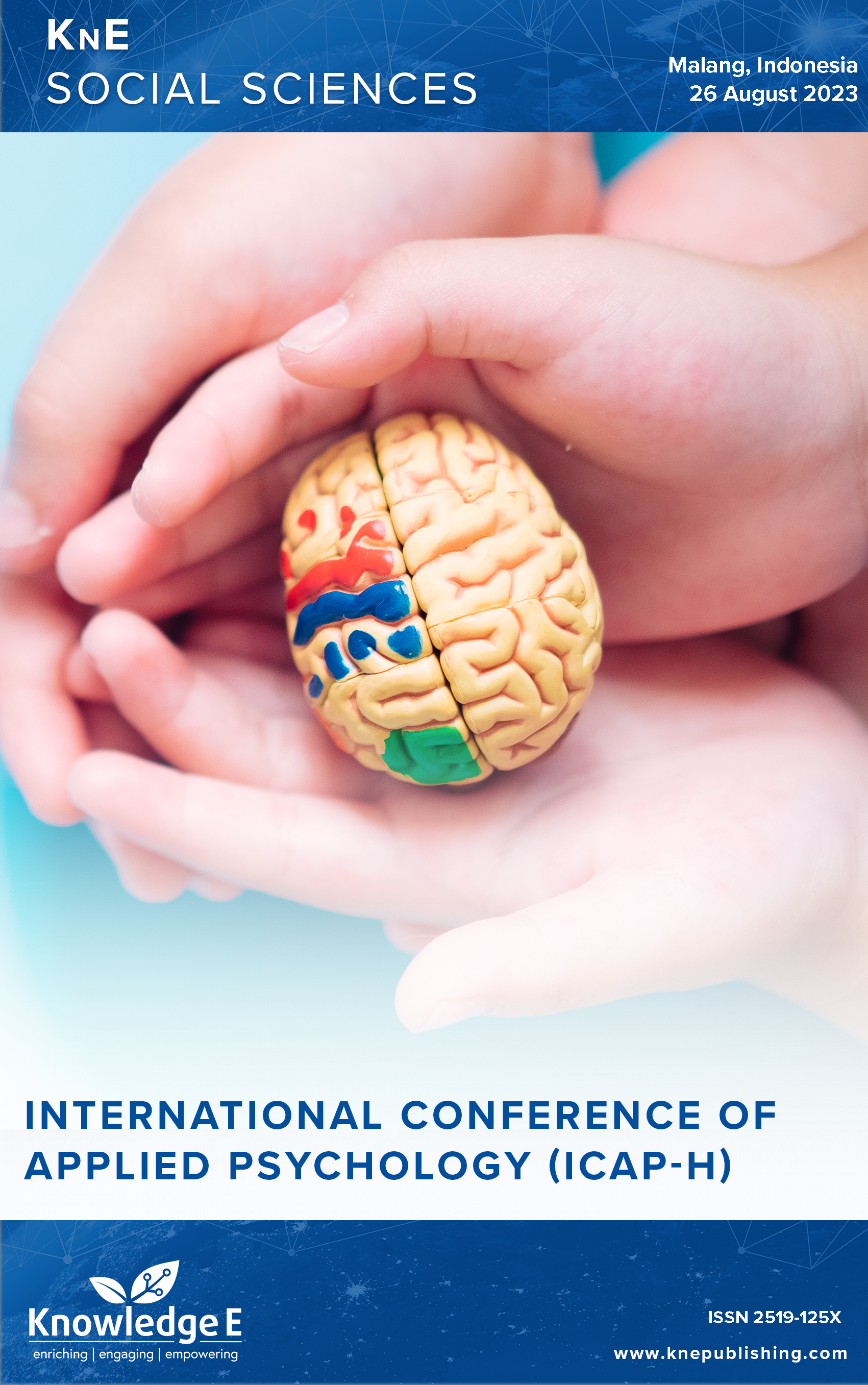Character Strengths of East Asia Adolescents and Their Relationships with Internet Addiction
DOI:
https://doi.org/10.18502/kss.v9i5.15205Abstract
With the advancement of technology, the use of the internet has become increasingly indispensable in daily life, leading to a growing concern over internet addiction among adolescents. This study aims to explore the relationship between character strengths and internet addiction in adolescents. A questionnaire survey was conducted with a sample of 310 Taiwanese high school students. The research instruments used were the “New Inventory of Adolescents’ Strengths”(NIAS) and the “chen internet addiction scale short version”(CIAS-10). Data analysis was performed using Pearson’s product–moment correlation, t-tests, and ANOVA. The results of the study revealed the following: (1) Adolescents scored highest in character strengths related to “Gratitude,” “Emotion Self-awareness,” and “Love,” while approximately 20.0% of students showed a tendency toward internet addiction; (2) Female participants demonstrated higher strengths in the dimensions of “Empathy,” “Gratitude,” “PersonMaking,” and “Love,” but no significant gender differences were found regarding internet addiction; (3) “Self-esteem,” “Emotion Self-awareness,” “Perseverance,” and “Self-control” exhibited a strong negative correlation with internet addiction. These findings provide a foundational basis for further research into the relationship between character strengths and internet addiction among adolescents. Strengthening specific character strengths may potentially contribute to reducing levels of internet addiction.
Keywords: adolescents, character strength, internet addiction
References
Suler J. The online disinhibition effect. Cyberpsychology & Behavior. 2004;7:321– 326. https://doi.org/10.1089/1094931041291295 DOI: https://doi.org/10.1089/1094931041291295
Kim K, Ryu E, Chon MY, Yeun EJ, Choi SY, Seo JS, et al. Internet addiction in Korean adolescents and its relation to depression and suicidal ideation: A questionnaire survey. International Journal of Nursing Studies. 2006;43:185–192. https://doi.org/10.1016/j.ijnurstu.2005.02.005 DOI: https://doi.org/10.1016/j.ijnurstu.2005.02.005
Seligman ME, Csikszentmihalyi M. Positive psychology. An introduction. American Psychologist. 2000;55:5–14. https://doi.org/10.1037/0003-066X.55.1.5 DOI: https://doi.org/10.1037//0003-066X.55.1.5
Park N, Peterson C, Seligman MEP. Strengths of character and wellbeing. Journal of Social and Clinical Psychology. 2004;23:603–619. https://doi.org/10.1521/jscp.23.5.603.50748 DOI: https://doi.org/10.1521/jscp.23.5.603.50748
Peterson C, Seligman MEP. Character strengths and virtues: A handbook and classification. 2004;162. https://doi.org/10.1176/appi.ajp.162.4.820-a DOI: https://doi.org/10.1176/appi.ajp.162.4.820-a
Wong YJ. Strength-centered therapy: A social constructionist, virtues-based psychotherapy. Psychotherapy. 2006;43:133–146. https://doi.org/10.1037/0033- 3204.43.2.133 DOI: https://doi.org/10.1037/0033-3204.43.2.133
Park N, Peterson C. The values in action inventory of character strengths for youth. What do child need to flourish? Conceptualizing Meas Indic Posit Dev. 2005:13–23. DOI: https://doi.org/10.1007/0-387-23823-9_2
Wu H-Y, Chen G-Y, Liao S-H, Liu C-H, Shieh B-L. The development and confirmatory factor analysis of the “inventory of adolescents” strengths”.” Psychological Tests. 2018;65:367–399.
Kuo, Yun-Chen; Wu H-Y. Development of the “New Inventory of Adolescents’ Short Strength Scale”. Journal of Educational Psychology. 2023;46:031–68. https://doi.org/10.53106/102498852023064602002 DOI: https://doi.org/10.53106/102498852023064602002
Lee J, Ahn JS, Min S, Kim MH. Psychological characteristics and addiction propensity according to content type of smartphone use. International Journal of Environmental Research and Public Health. 2020;17. https://doi.org/10.3390/ijerph17072292 DOI: https://doi.org/10.3390/ijerph17072292
Chen SH, Weng LJ, Su YJ, Wu HM, Yang PF. Development of Chinese Internet Addiction Scale and its psychometric study. Chinese Journal of Psychology. 2003;45:279–294. https://doi.org/10.1037/t44491-000 DOI: https://doi.org/10.1037/t44491-000
Lee M, Chung SJ, Lee Y, Park S, Kwon JG, Kim DJ, et al. Investigation of correlated internet and smartphone addiction in adolescents: Copula regression analysis. International Journal of Environmental Research and Public Health. 2020;17:1–12. https://doi.org/10.3390/ijerph17165806. DOI: https://doi.org/10.3390/ijerph17165806
Suler J. Internet addiction. 1996.
Chen W-T, Huang C-J. A meta-analysis of gender differences in internet addiction among Taiwanese students. Chinese Mental Health Journal. 2015;28:351–387.
Dong G, Lu Q, Zhou H, Zhao X. Impulse inhibition in people with Internet addiction disorder: Electrophysiological evidence from a Go/NoGo study. Neuroscience Letters. 2010;485:138–142. https://doi.org/10.1016/j.neulet.2010.09.002 DOI: https://doi.org/10.1016/j.neulet.2010.09.002
Arpaci I, Abdeljawad T, Baloglu M, Kesici S, Mahariq I. Mediating effect of internet addiction on the relationship between individualism and cyberbullying: Cross- Sectional Questionnaire Study. Journal of Medical Internet Research. 2020;22:1–14. https://doi.org/10.2196/16210 DOI: https://doi.org/10.2196/preprints.16210
Abbasi GA, Jagaveeran M, Goh YN, Tariq B. The impact of type of content use on smartphone addiction and academic performance: Physical activity as moderator. Technology in Society. 2021;64:101521. https://doi.org/10.1016/j.techsoc.2020.101521 DOI: https://doi.org/10.1016/j.techsoc.2020.101521
Baloglu M, Sahin R, Arpaci I. A review of recent research in problematic internet use: Gender and cultural differences. Current Opinion in Psychology 2020;36:124–129. https://doi.org/10.1016/j.copsyc.2020.05.008 DOI: https://doi.org/10.1016/j.copsyc.2020.05.008
Sevelko K, Bischof G, Bischof A, Besser B, John U, Meyer C, et al. The role of self-esteem in Internet addiction within the context of comorbid mental disorders: Findings from a general population-based sample. Journal of Behavioral Addictions. 2018;7:976–984. https://doi.org/10.1556/2006.7.2018.130 DOI: https://doi.org/10.1556/2006.7.2018.130
Akhter N. Relationship between internet addiction and academic performance among university undergraduates. Journal of Science Education and Technology. 2013;8:1793–1796. https://doi.org/10.5897/ERR2013.1539

